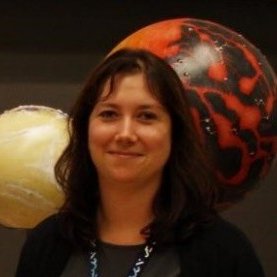Planetary Evolution and Search for Life on Habitable Planets
A special issue of Geosciences (ISSN 2076-3263). This special issue belongs to the section "Biogeosciences".
Deadline for manuscript submissions: closed (1 March 2019) | Viewed by 59372
Special Issue Editors
Interests: mantle convection; planetary habitability; astrobiology; planet evolution; mineralogy; outgassing; plate tectonics; volatile cycles
Interests: space life science; astrobiology; biosignatures; extremophiles; radiation; extraterrestrial conditions; search/origin/evolution of life
Special Issue Information
Dear Colleagues,
This Special Issue aims at bringing together studies from different research fields of astrobiology, that are related to the questions of habitability of planets and moons and the search for life both in our solar system and beyond.
Earth is the only planet that we know of so far, which is inhabited by life. Our neighbour planets Mars and Venus lack proof of extinct or extant life, and are examples of at least partly uninhabitable worlds for life as we know it. With more and more exoplanets being discovered in the right distance to their host stars, such that these planets could have liquid water—and hence Earth-like life—at their surface, it is increasingly important to understand what factors make a planet habitable, and what influences not only origin but also distribution, evolution and survival of life.
We invite both review papers as well as original research papers from all subfields of astrobiology with the focus on planetary habitability within and outside the solar system. This includes for example conceptual studies on habitability of planets or niches, models of the interactions evolving between planet and life with its signatures, as well as space life science studies to understand the limits of Earth-like life.
It is recommended to submit a short letter of intent with information on title, authors, and a short description of the planned paper at least two months before the submission deadline to the guest editors in order to verify if the paper matches the scope of the special issue.
Prof. Dr. Lena NoackDr. Ralf Moeller
Guest Editors
Manuscript Submission Information
Manuscripts should be submitted online at www.mdpi.com by registering and logging in to this website. Once you are registered, click here to go to the submission form. Manuscripts can be submitted until the deadline. All submissions that pass pre-check are peer-reviewed. Accepted papers will be published continuously in the journal (as soon as accepted) and will be listed together on the special issue website. Research articles, review articles as well as short communications are invited. For planned papers, a title and short abstract (about 100 words) can be sent to the Editorial Office for announcement on this website.
Submitted manuscripts should not have been published previously, nor be under consideration for publication elsewhere (except conference proceedings papers). All manuscripts are thoroughly refereed through a single-blind peer-review process. A guide for authors and other relevant information for submission of manuscripts is available on the Instructions for Authors page. Geosciences is an international peer-reviewed open access monthly journal published by MDPI.
Please visit the Instructions for Authors page before submitting a manuscript. The Article Processing Charge (APC) for publication in this open access journal is 1800 CHF (Swiss Francs). Submitted papers should be well formatted and use good English. Authors may use MDPI's English editing service prior to publication or during author revisions.
Keywords
- planetary habitability
- exoplanets
- astrobiology
- search for life
- biosignatures
- spaceflight missions and technologies
- origin/evolution/distribution of life
- extremophiles/microbiology






